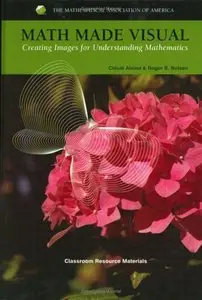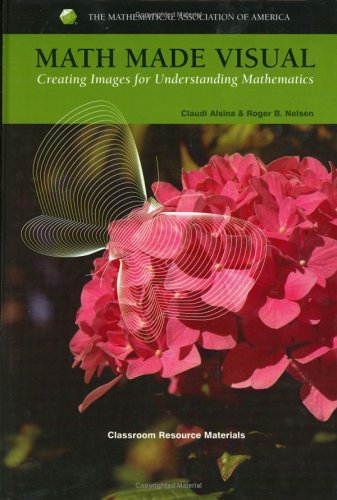Roger Nelsen, Claudi Alsina, "Math Made Visual: Creating Images for Understanding Mathematics"
2006 | pages: 190 | ISBN: 0883857464 | PDF | 10,8 mb
2006 | pages: 190 | ISBN: 0883857464 | PDF | 10,8 mb
Is it possible to make mathematical drawings that help to understand mathematical idea, prooifs and arguments? The authors of this book are convinced that the answer is yes and the objective of this book is to show how some visualization techniques may be employed to produce pictures that have both mathematical and pedagogical interest. Mathematical drawings related to proofs have been produced since antiquity in China, Arabia, Greece and India but only in the last thirty years has there been a growing interest in so-called "proofs without words." Hundreds of these have been published in "Mathematics Magazine" and "The College Mathematics Journal," as well as in other journals, books and on the Internet. Often times, a person encountering a "proof without words" may have the feeling that the pictures involved are the result of a serendipitous discovery or the consequence of an exceptional ingenuity on the part of the pictureÂ’s creator. In this book the authors show that behind most of the pictures "proving" mathematical relations are some well-understood methods. As the reader shall see, a given mathematical idea or relation may have many different images that justify it, so that depending on the teaching level or the objectives for producing the pictures, one can choose the best alternative. The book is divided into three parts. Part I consists of twenty short chapters. Each one describes a method to visualize some mathematical idea (a proof, a concept, an operation,…) and several applications to concrete cases, explained in detail. At the end of each chapter there is a collection of challenges so the reader may practice the abilities acquired during the reading of the preceding sections. Part II presents some general pedagogical considerations concerning the development of visual thinking, practical approaches for making visualizations in the classroom and a discussion of the role that hands-on materials play in this process. Part III consists of hints or solutions to all challenges of Part I.
My Links



